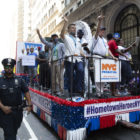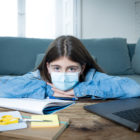
As COVID-19 lingers, some juveniles facilities rate better than others in health safety
|
The nation’s 1,772 juvenile facilities face many challenges caused by the pandemic, according to those working inside and monitoring them from the outside. So far, juvenile facilities — 789 of the 1,510 nationwide are detention centers or long-term secure facilities, the remainder are group homes, residential treatment centers, wilderness camps and such — and the organizations monitoring them have reported no young people dying from the disease.








